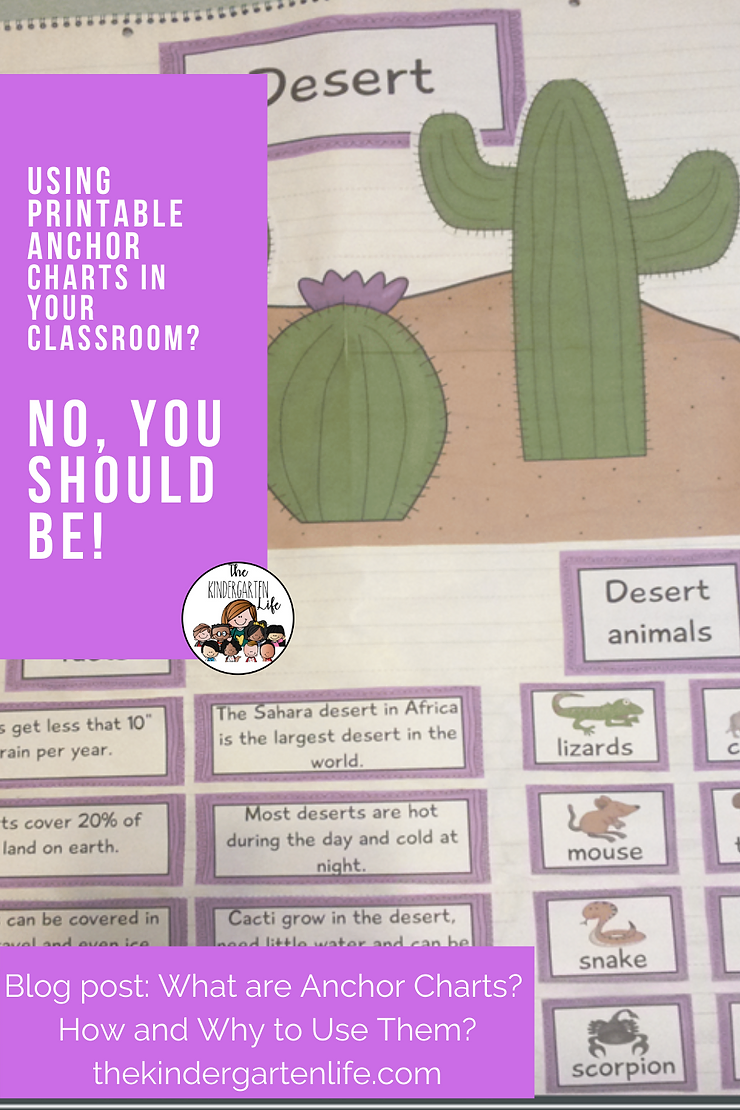Anchor charts are large posters that give children a visual representation of a concept. These classroom charts allow children to reference the targeted subject while working. I always tell my students to use their tools in the classroom while they are working and anchor charts are a huge part of those tools. These are 2 of my first printable anchor charts, Desert Habitat and Plant Life Cycle. I created these anchor charts back in 2011 and I am still using the same ones to this day.




For instance if we are studying habitats I will make an anchor chart that has a picture of the habitat, facts about the habitat and common animals found in that habitat. I will then hang these charts on the wall for the children to reference during writing activities and science lessons. Having multiple anchor charts on the same core subject helps children sort and organize information for each habitat. They can compare and contrast the different habitats as well as discuss the different animals and why they live in the different areas. I also find them using the charts for spelling, some of these names are hard!


Most of my printable anchor charts are for science concepts. I am not an artist and drawing all of these pieces would make for a very messy chart. I also do not have much prep time so grabbing these pieces and a glue stick to assemble the chart while I am teaching is a great time saver.
I have found anchor charts to be useful in many subjects. I have created anchor charts to meet objectives in math, reading, English, social concepts and science. I have recently created anchor charts for patterns, sorting parts of speech, sentence formation and proper book reading. These charts are created while I am teaching and I redo them every year with my classes. I use my smelly markers that are brightly colored to make the charts, they do not bleed through the pages like sharpies do.
I find my students often referring to items we have discussed that are on the anchor charts and I can then point them to using the charts when they have a question or if they need something re-explained.
This picture came up on my facebook timeline the other day. This was from 2011 (hence the graininess, sorry!) and was my last Pre-K group before my move to Kindergarten.


I have several different types of anchor charts available in My TpT store. You can start out with my FREE Butterfly Life Cycle anchor chart and my FREE Community Helper Anchor Chart: Teacher! You may be interested in the following products that have been shown above.








Comments
Post a Comment
Comments and Ideas are always welcome, I am always looking for new units to create for TpT!